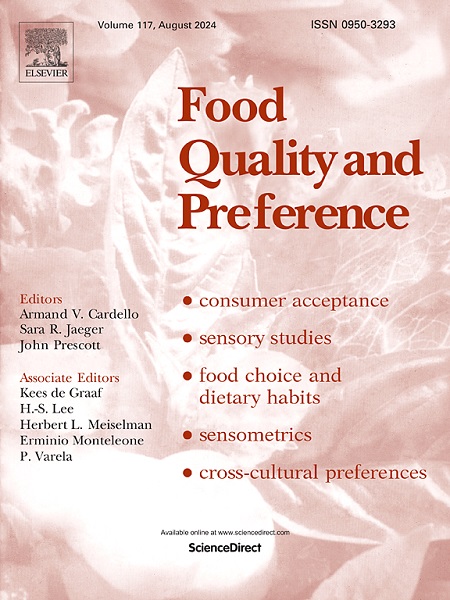Understanding the role of food Neophobia in the willingness to consume functional rice
IF 4.9
1区 农林科学
Q1 FOOD SCIENCE & TECHNOLOGY
引用次数: 0
Abstract
Understanding consumer preferences for new foods, such as functional rice, is crucial for developing varieties that meet consumer needs and promote health. Our research, incorporating a hybrid discrete choice model and psychometric data, reveals that food neophobia significantly contributes to hesitancy in consuming functional rice. Additionally, we found that being female, childless, and having lower levels of education and income are associated with higher levels of food neophobia. Based on a sample of 1666 Chinese respondents, these findings underscore the potential impact of functional rice on consumer health. The health benefits of functional rice strongly appeal to consumers, especially those with a good understanding of the concept, who engage in regular exercise, or who have health issues. In particular, respondents preferred micronutrient-enhanced rice to low GI and gluten varieties when comparing various health benefits. Notwithstanding, individuals who suffer from kidney disease show a strong preference for the low-gluten variety. A segment analysis confirms these results, indicating a preference for functional rice, particularly the micronutrient-enhanced variety, among diverse consumer segments. Finally, in general, educated, younger, and wealthier individuals are more likely to choose functional rice.
求助全文
约1分钟内获得全文
求助全文
来源期刊

Food Quality and Preference
工程技术-食品科技
CiteScore
10.40
自引率
15.10%
发文量
263
审稿时长
38 days
期刊介绍:
Food Quality and Preference is a journal devoted to sensory, consumer and behavioural research in food and non-food products. It publishes original research, critical reviews, and short communications in sensory and consumer science, and sensometrics. In addition, the journal publishes special invited issues on important timely topics and from relevant conferences. These are aimed at bridging the gap between research and application, bringing together authors and readers in consumer and market research, sensory science, sensometrics and sensory evaluation, nutrition and food choice, as well as food research, product development and sensory quality assurance. Submissions to Food Quality and Preference are limited to papers that include some form of human measurement; papers that are limited to physical/chemical measures or the routine application of sensory, consumer or econometric analysis will not be considered unless they specifically make a novel scientific contribution in line with the journal''s coverage as outlined below.
 求助内容:
求助内容: 应助结果提醒方式:
应助结果提醒方式:


